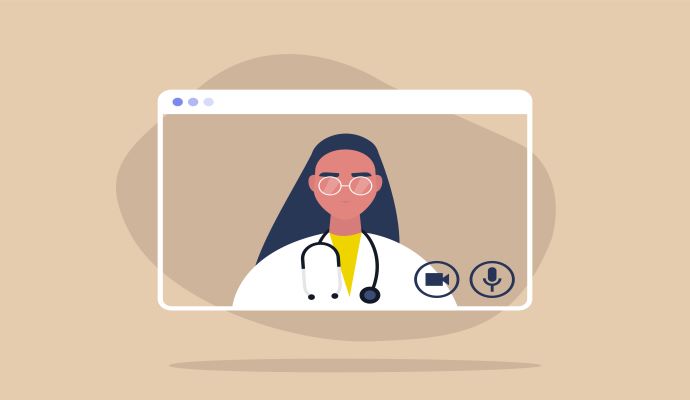Stanford Finds Virtual Care Quality On Par With Standard Care in ED
Stanford Health Care found that the Virtual Visit Track in its ED, which involves a remote physician consulting with low-acuity patients, is an effective alternative to in-person consultations.

Source: Getty Images
- A case study published in NEJM Catalyst shows that the quality of virtual care provided to low-acuity patients at Stanford Health Care's emergency department is not inferior to that of standard care workflows.
In December 2020, Stanford Health Care decided to accelerate the launch of its plan to integrate virtual visits into clinical care. The decision was made to help combat the disruptions in care delivery that resulted from the COVID-19 pandemic.
As part of the acceleration, the health system converted its existing ED Fast Track care unit to a Virtual Visit Track. In an ED, low-acuity patients often face long wait times as higher-acuity patients are prioritized, the NEJM Catalyst case study notes. To mitigate this issue, Stanford Health Care created the Fast Track unit, comprised of physicians, nurses, and ED technicians, which was focused on treating low-acuity patients as quickly as possible.
Amid surges of COVID-19 cases, Stanford implemented the Virtual Visit Track (VVT) in place of the Fast Track in both its adult and pediatric EDs. The VVT involves a single physician at a satellite location evaluating low-acuity ED patients via telehealth. On-site, VVT-trained support staff assist the physician.
Within the first year of its implementation, 2,232 patients received care through the VVT. Since about seven months after the launch, there has been a sustained patient volume of 12 patients seen during an eight-hour shift through the VVT.
On analyzing care provided through the VVT, researchers found the median ED length of stay for VVT patients was 1.9 hours compared with 4.2 hours for patients who received care through standard ED workflows.
Further, 34 percent of VVT physicians rated their ability to deliver care on par with an in-person consultation as "excellent," and the other 66 percent rated it as "very good."
VVT patients also had a lower median return visit rate. The median rate of return within 72 hours of the initial ED visit was 6.7 percent for VVT patients versus 7.2 percent for patients experiencing standard care workflows. Similarly, VVT patients were slightly less likely to return to the ED within seven days, with a median return visit rate of 10.4 percent compared to 12.4 percent among standard care workflow patients.
While neither difference in rate is statistically significant, this data suggests that VVT visit quality is likely not worse than standard care workflows for low-acuity patients, according to the researchers.
"Virtual care is a fast-growing method of care delivery," they concluded. "Although typically applied when a patient is outside of the care environment, a VVT program can be used in other situations in which options for in-person evaluation are limited."
Telehealth use has leveled off since the pandemic's peak, but it remains a popular mode of healthcare delivery, especially among patients.
A vast majority of healthcare consumers (94 percent) who had received care through telehealth in the preceding year said that they intend to use it again, according to a survey conducted by JD Power in June and July.
Telehealth's enduring popularity is bolstered by research showing that its efficacy and quality are largely on par with in-person care.
One recent study shows that telehealth patients perform similarly or better than in-person care patients on certain quality measures.
